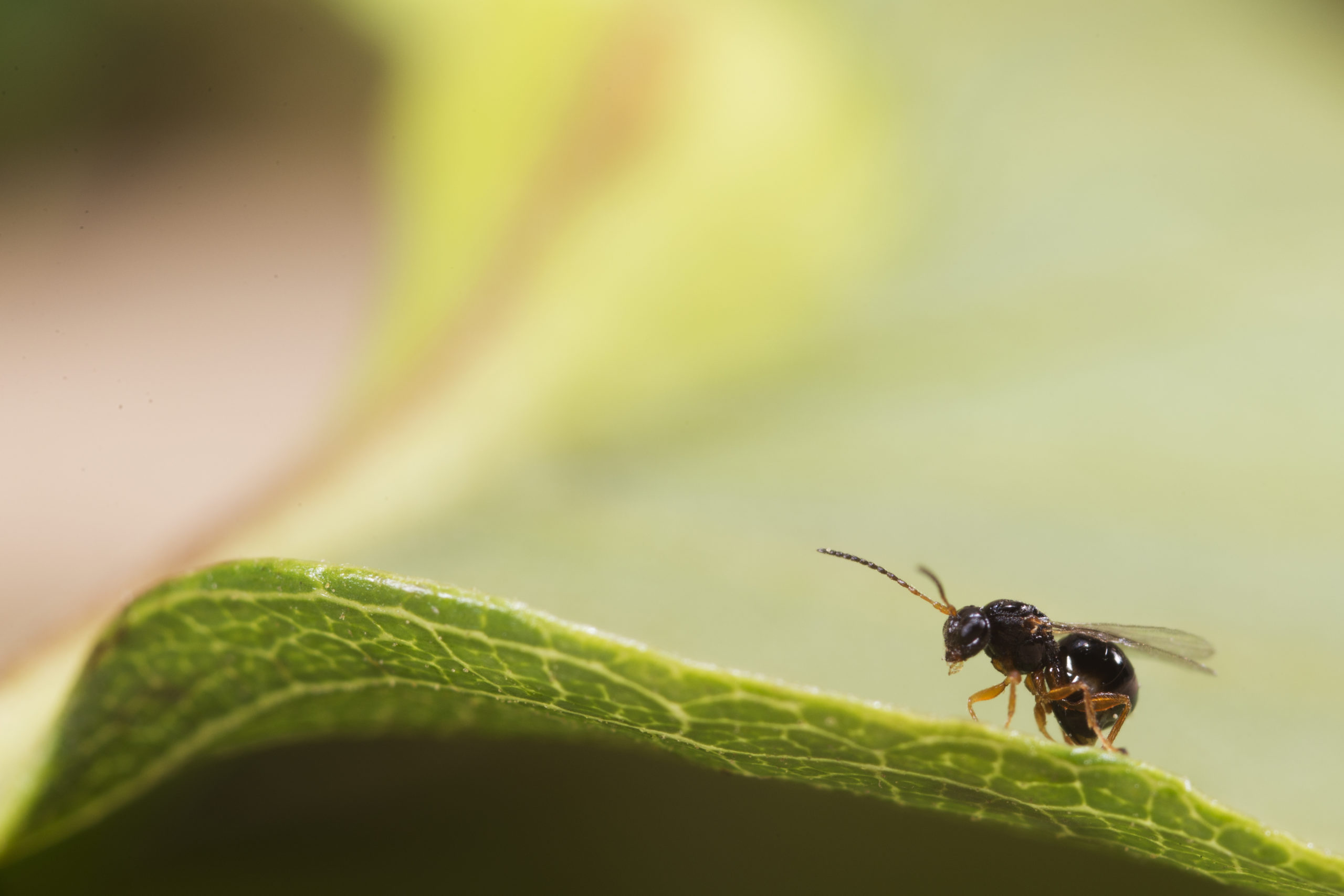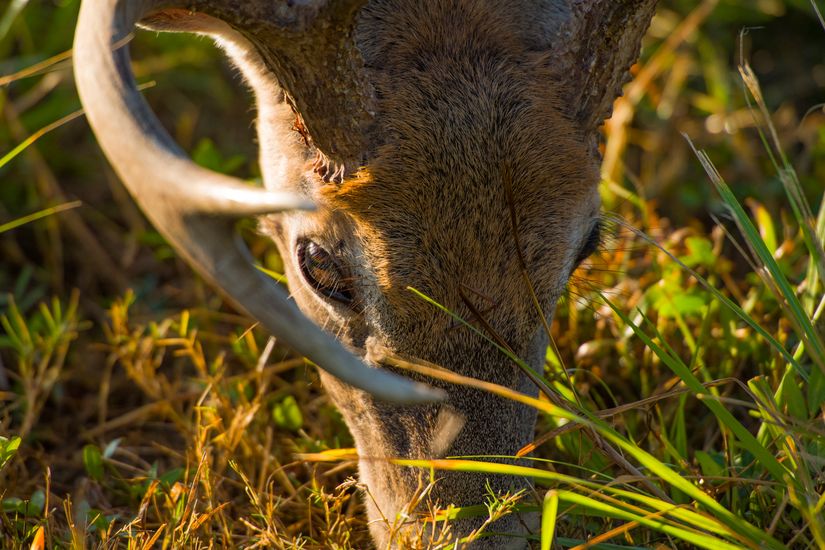Preventive Maintenance
Good old-fashioned dirt wisdom tells us that an ounce of prevention is worth a pound of cure. We plant shrubs and trees for wildlife, but some species will be unintentionally ungrateful, literally biting the hand, or in this case, the limb that feeds them. Knowing what to expect in the way of plant pests and taking steps to reduce their impact will go a long way toward preventing damage and infestation that might otherwise prove costly and disappointing.
Rather than considering each separately, it will be more beneficial to you and the environment to take a step back, look at the big picture and develop an integrated pest management (IPM) plan. IPM is an ecosystem-based strategy that utilizes biological control, habitat manipulation, modification of cultural practices, and the use of resistant varieties. You should also consider using organic products over traditional chemical products where pesticides or repellants are required.


Left: Japanese Beetle. Right: Chestnut Gall Wasp.
One facet of IPM involves creating conditions unfavorable to pests, thereby reducing the likelihood of their occurrence. Beetle infestations cause defoliation or proliferation of damaging fungus. Gall wasps damage foliage and reduce nut production. Weevils infest nuts, and ants can literally eat trees from the inside out. A very simple way of preventing an infestation is selecting disease and pest-resistant varieties. The folks at Chestnut Hill Outdoors have already done most of the heavy lifting there for you by selecting and developing tree and shrub varieties known to be more pest-resistant than your run-of-the-mill garden center varieties.
Another step involves keeping plants healthy, so they are better able to ward off potential infection. To survive and thrive, plants need sun, soil nutrients, and water. You should have considered and addressed all three before and during the planning and planting processes, but regular monitoring is always advisable. If preferred plants aren’t getting enough sunlight, you may need to open up the canopy by removing larger, undesirable species. Periodic soil testing will tell you if your plants are getting the right type and amount of nutrients. Younger trees especially need more water, and you may need to provide more through direct watering or irrigation. Conversely, ditches or tiling can help rid areas of excess water.
If pesticides/insecticides are part of your IPM plan, we recommend you reach out to your local county extension office. Due to the variability and diversity of pests and species based on region, we are unable to give specific recommendations for each region.

Some potential pests can’t be avoided, but they can be deterred. The deer that you planted trees to attract may over-browse or rub those trees, damaging them in the process. Maintaining a healthy supply of natural browse from other, non-mast-producing trees can reduce potential damage to desirable species. Tree tubes and fencing will prevent damage, especially to younger trees, protecting them until they grow out of the reach of nibbling pests.
Deer aren’t the only animals out there nibbling and gnawing your trees. Mice, voles, and rabbits may gnaw on the bark and, in extreme cases, can girdle and kill young trees. This can be prevented largely with tree tubes and weed control, either by mowing or applying organic mats or mulch around the tree base. Essentially you’re discouraging these pests by removing the protective cover.
Alabama Land Specialist, Ben Richardson, discusses how best for protect your trees from wildlife:
All of the above may seem like a lot, but it will cost a lot less in time and effort than replacing damaged or dead trees. It’s a small price to pay for a lifetime-plus of benefit realized from productive mast orchards. Spend wisely, and you’ll come out ahead in the long run.


